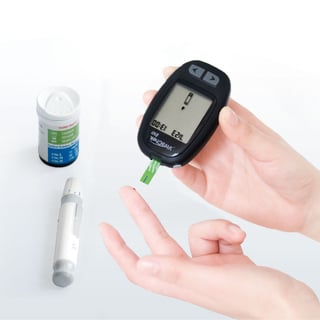In an era where health monitoring is increasingly reliant on technology, glucose monitors stand as indispensable tools for managing diabetes. However, recent studies have shed light on a concerning issue: the potential misclassification of individuals as being at risk of diabetes by these very devices. This revelation raises critical questions about the accuracy and reliability of glucose monitors, urging a closer examination of their efficacy in identifying true diabetes risk factors.
Understanding the Issue
Glucose monitors, hailed for their convenience and accessibility, are designed to measure blood sugar levels swiftly and efficiently. Yet, emerging evidence suggests that these devices may not always provide accurate readings, leading to misclassifications of individuals as being at risk of diabetes. This misclassification could have significant implications for both patients and healthcare professionals, potentially leading to unnecessary treatments, lifestyle modifications, and undue stress.
The Role of Glucose Monitors in Diabetes Management
Before delving into the complexities of misclassification, it’s essential to recognize the pivotal role that glucose monitors play in diabetes management. For individuals living with diabetes, these devices serve as lifelines, empowering them to monitor their blood sugar levels regularly and make informed decisions about their diet, exercise, and medication. However, if these monitors inaccurately identify individuals as being at risk of diabetes, it could disrupt the delicate balance of disease management, potentially exacerbating health outcomes.
Factors Contributing to Misclassification
Several factors contribute to the misclassification of individuals as being at risk of diabetes by glucose monitors. These include variations in device accuracy, user error, and physiological factors such as hydration status and medication interference. Additionally, the lack of standardized calibration procedures and inconsistent quality control measures across different brands further compound the problem, making it challenging to ensure the reliability of glucose monitor readings.
Read more How Can Continuous Glucose Monitoring Technology Improve Outcomes?
Implications for Public Health
The misclassification of individuals as being at risk of diabetes poses significant implications for public health. Not only does it undermine the trust in glucose monitoring technology, but it also raises concerns about the overdiagnosis of diabetes and its associated complications. Furthermore, inaccurate risk assessments could lead to unnecessary healthcare expenditures, straining already burdened healthcare systems and diverting resources away from where they are most needed.
Addressing the Issue of Risk of Diabetes
To address the issue of misclassification by glucose monitors, a multifaceted approach is necessary. Firstly, there is a pressing need for improved accuracy and reliability standards for these devices, along with rigorous testing and validation protocols. Additionally, healthcare professionals must receive adequate training in interpreting glucose monitor readings and understanding the limitations of these devices. Finally, greater transparency and accountability from manufacturers regarding the performance of their glucose monitors are essential to rebuild trust and ensure patient safety.
Also, read about What Should You Consider Before Buying a Glucose Monitor for Home Use?
Conclusion
While glucose monitors have revolutionized diabetes management, their potential to misclassify individuals as being at risk of diabetes raises serious concerns about their accuracy and reliability. Addressing this issue requires collaboration between healthcare professionals, manufacturers, and regulatory bodies to implement stricter standards and enhance the overall quality of glucose monitoring technology. By doing so, we can safeguard the health and well-being of millions of individuals at risk of diabetes and ensure that they receive the most accurate and reliable care possible.


